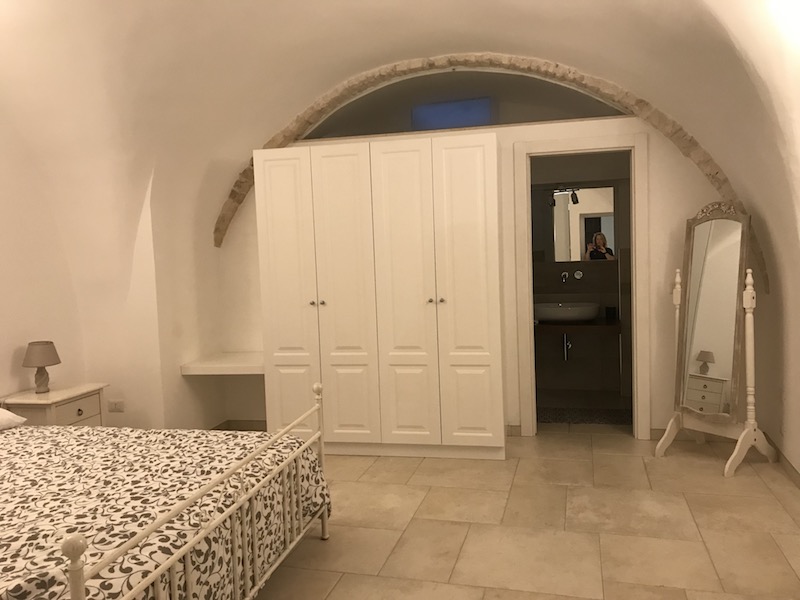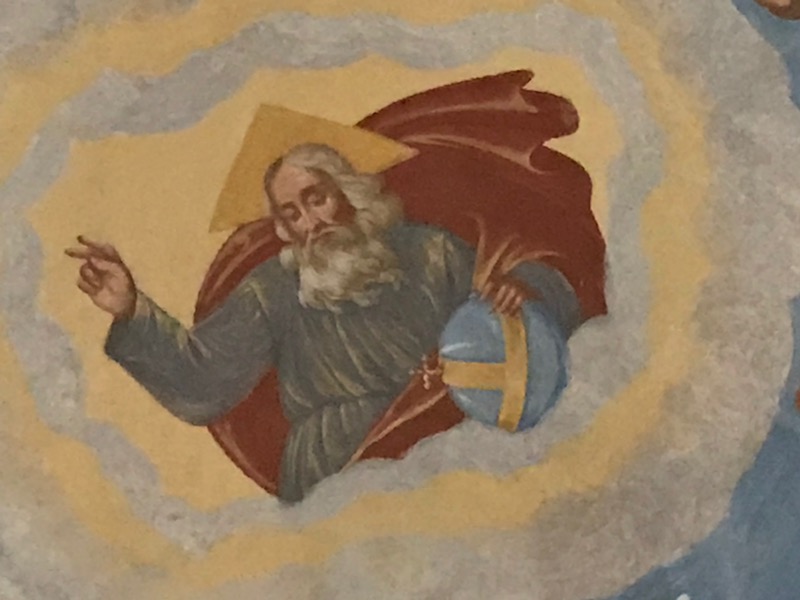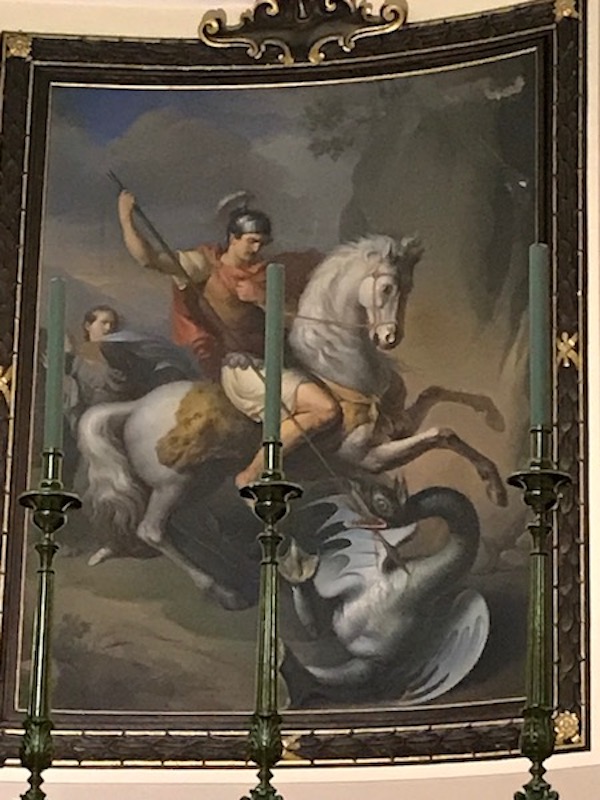Our Blog - Southern Italy - Locorotondo
We left Bari and headed South again, along the coastline. Here we stopped and got a couple pictures of the rocky shoreline and the Adriatic.



Then we turned inland and up to the small, hill-top town of Locorotondo. The historical center is made up of a maze of alleyways lined with whitewashed homes and archways. Going down the hill are a set of concentric circular roads, which help to give the town its' name, which means "Round place. It is listed as one of the most beautiful villages in Italy, and really doesn't have any "tourist attractions" other than itself.
The site has been here a long time, with archaeological finds dating between the 3rd and 7th centuries BC. The main town dates back to about 1000 AD as a hamlet under the control of a nearby Benedictine monastery. The main entrance to the old part of the city is through Piazza Vittorio Emanuele II, once known as Piazza Castello. There used to be a gate here, Porta Napoli, which was the main entrance back then as well. You can still see part of the ancient city wall there as well.

There are actually no hotels in the old part of the city, but there are several B&Bs or apartments that you can rent. We had a 1-bedroom apartment, which was built in what looks like the cellar of the apartment above it. Similar to the B&B that we stayed at in Bari, this one was also immaculate! It was very updated and looked almost brand new, with a little kitchen/living room/dining room area, a large bedroom, and a fairly good-sized bathroom. You can see the details of the curved "cellar" ceilings and arches throughout.




We spent the afternoon just rambling through the little streets, looking at the many archways (one dated to 1697), and checking out churches.


This little tiny chapel is the 17th century Church of San Nicola from Myra, and this is almost the definition of "don't judge a book by its cover". From the outside, you just see a white wall, a little door, and a couple bells. But walk inside, look up, and wow! The barrel vaults are all painted as well as having a little dome (like a trullo). The paintings show scenes of the life and miracles of San Nicola.






The 18th century Church of St. George the Martyr was built between 1790 and 1825 although the original chapel dedicated to Saint George on this site goes back to Medieval times, about 1100. The interior of the church, which must have been renovated, is quite different than the somber, plain exterior.



There is quite a bit of marble on the various altars, like this one, the Altar of the Madonna of Rosary. It is a Baroque altar made in 1764 in Naples and is in the typical Baroque structure (table, ciborium, steps, and the pieces around the altar). Around the oil painting are 15 small ovals with small paintings depicting the mysteries of the Holy Rosary.


Over the main altar is this painting, showing Saint George killing the dragon and then a single stained-glass window.


A little bit morbid, but there was a funeral going on at the church when we arrived and so we had gone and looked at some other sights. We ended up coming back across the funeral procession, and it reminded me of the opening scene in Godfather II where you have the funeral procession of Vito's father, with the band playing in front, then the coffin, and then the people walking behind.
A few pictures of the surrounding countryside with vineyards and trulli's .... and you can see the clouds coming in with a storm.




Locorotondo has its own white DOC (Denominazione di origine controllata, so basically a definition of a specific type of wine from a specific location ... France also has these called AOC/AOP). There are roughly 4,000 acres of vineyards around Locorotondo and the wines are normally a blend of several grape varieties: Verdeca and Bianco d'Alessano (the majority), Bombino bianco, Fiano and Malvasia Toscana. So of course, we had to try a bottle with dinner.

One thing that is very typical to this area is a dish that is a fava bean puree with chicory ... we've seen it on quite a few menus, so we had to try that one. It was actually quite good! Tom went with a set of local meatballs.


We then had a couple pasta dishes ... a "light" carbonara made with "happy" eggs (yes, that is what the menu said ... she said they were basically from free-range chickens) ... and then Orecchiette with a traditional donkey-meat ragout (yes, they do donkey meat here). Tom then also got a main course of chicken stuffed with asparagus and carrots.


